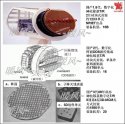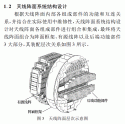Wait. Don't the radars of F-15E and F-35 also have a 400-500km range? How do you judge the range of a radar? I know there are different measurements for different targets.
Actually I should have written it differently; Irbis E is just a much more powerful radar compared to older radars of previous generations whether it is Chinese, Russian, or Western.
I don't know what the range for F-35's APG-81 and F-15E's APG-70 are, but the F-22's APG-77 has a range of ~200 km against a 1m^2 target whereas Irbis E has a 400km range against a 3m^2 target which evens out more or less right.
The Chinese radars listed in the attachment that you commented on were all much older radar designs than the likes of advanced phased arrays like APG-77 or even Irbis E, so the discrepancy in range is to be expected.
So to answer your original question, it is the case that older radars tend to be less powerful than radars of new generations, and the radars listed in the diagram are all of an older design than equivalents like what is seen on Su-35S or F-22, F-35.





